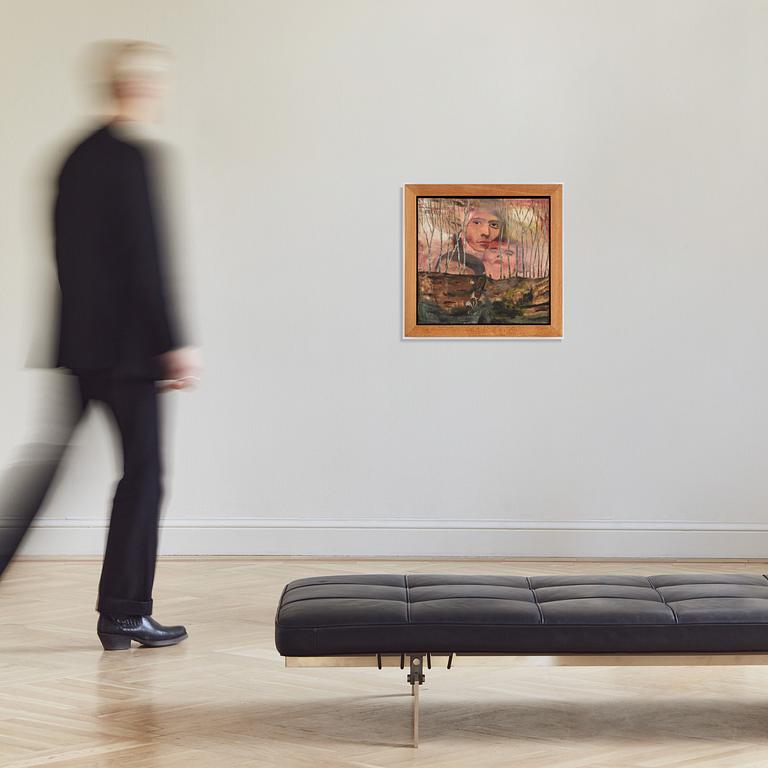Mamma Andersson
"Skallgång I"
Signed Karin Mamma Andersson and dated 1997 verso. Oil on panel 54.5 x 57.5 cm.
Alkuperä - Provenienssi
Stockholms Auktionsverk, Modern Art & Works of Art, 25 April 2008, lot 1140.
Private Collection.
Näyttelyt
Jönköpings läns museum, "2+2", 7 July - 9 August 1997.
Kirjallisuus
Moderna Museet, Ann-Sofi Noring (ed.), "Mamma Andersson", 1997, illustrated on full page.
Muut tiedot
As with many of Mamma Andersson's paintings, “Skallgång I” (The Search Party) features parallel events and a powerful psychological impact. Here, the sculptural, shimmering white birch trees that frequently appear in her work are evident. Four faces hover above the landscape. Several uniformed figures appear to be engaged in an intense search, as suggested by the painting's title.
While Andersson's paintings offer many possible interpretations, the inspiration for this particular piece was a newspaper article about two missing children that was published a few years earlier. The artist's own sons were around the same age as the missing children, and the incident had a profound effect on her. The theme and placement of the search party figures hint at Mamma Andersson's fascination with the work of Dick Bengtsson. In one of his most famous paintings, “Bergsvandrare” (Mountain Wanderers) from 1974, there is also an underlying sense of unease about the three figures heading towards an unknown destination in the mountain landscape. Both artists have a similar ability to connect the past and the present, everyday life and the world of fantasy, beauty and distortion in a personal way.
Mamma Andersson was nominated for the Carnegie Art Award the year after this painting was created. She was nominated three times in total and finally won first prize in 2006. The jury's statement largely summarised her entire artistic career: 'Her work makes full use of painting's ability to create visual worlds that are both familiar and fantastic. These worlds are rooted in the everyday physical and spatial experiences of figures and landscapes, while simultaneously foraying into a synthetic world of arbitrarily assembled visual symbols. […] With a sophisticated and often surprising use of images within images, she creates a heightened sense of the visual and cultural specificity of painting, and its atmospheric and persuasive power."






















































